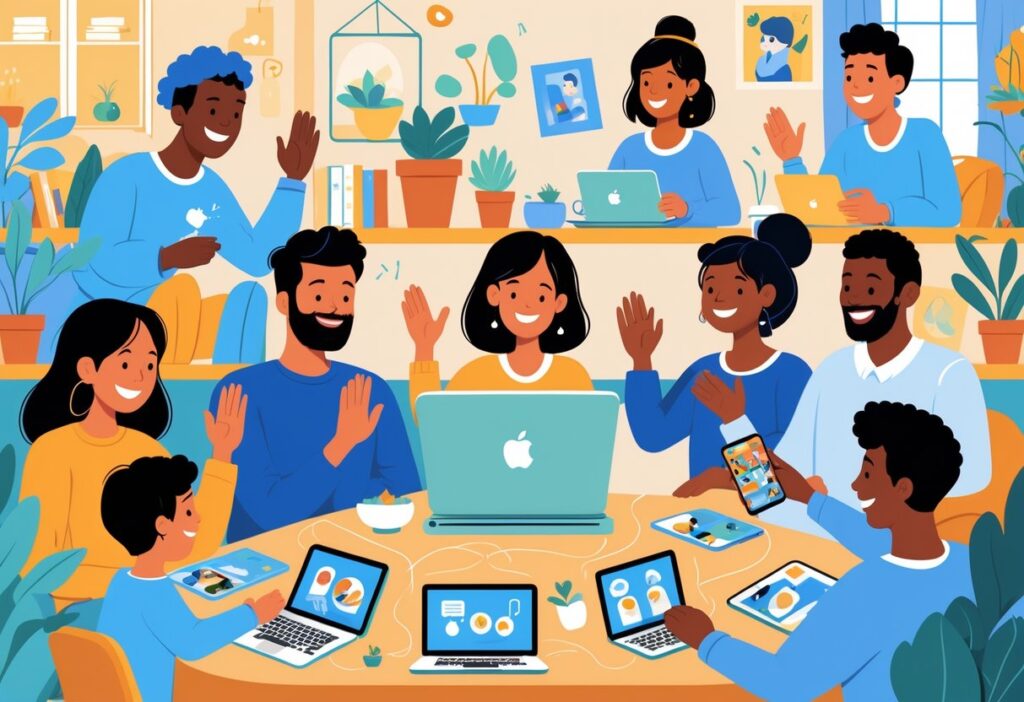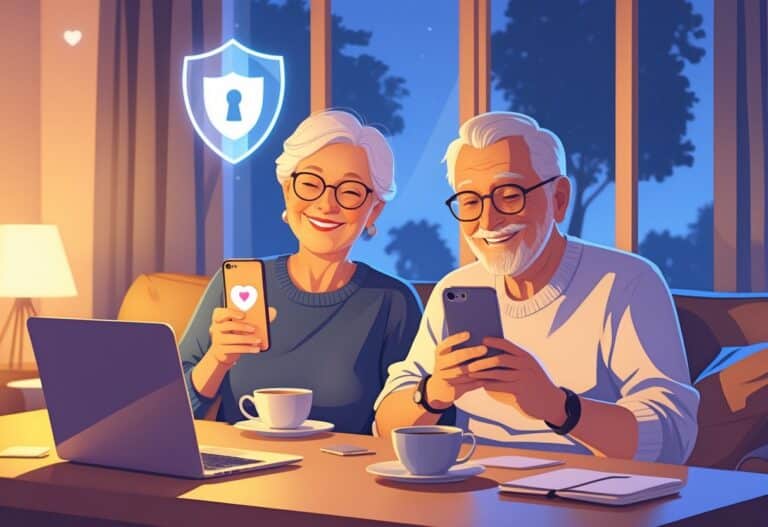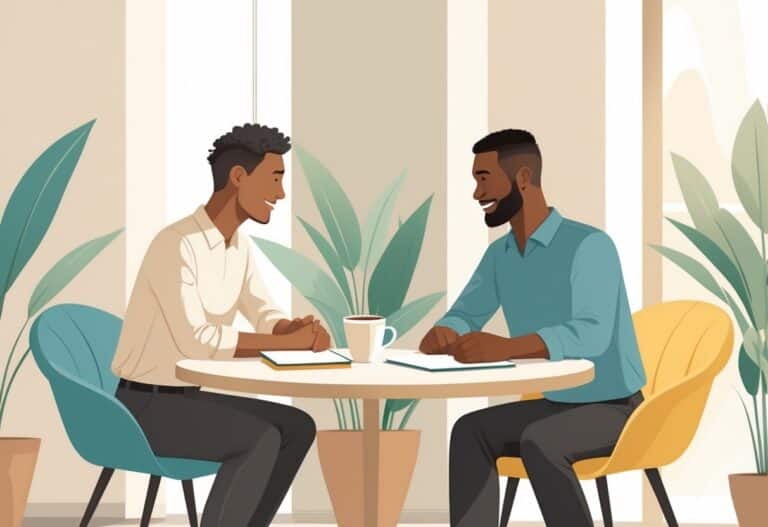When someone you care about moves away, the distance can feel overwhelming. The relationship might seem harder to maintain.
Moving away doesn’t have to mean losing touch with the people who matter most to you. These days, you’ve got more ways than ever to bridge the physical gap and keep meaningful connections alive.
The trick is figuring out how to use both modern technology and timeless gestures. Maybe you hop on a video call to share your daily life, or surprise them with a care package just because.
From family scattered across the country to a partner in another state, keeping those bonds strong takes intention—and a little creativity. There are plenty of ways to overcome the challenges and even make your relationships stronger, no matter how many miles stretch between you.
Understanding the Importance of Staying Connected
When someone moves away, the distance brings real emotional and practical challenges for both sides. Staying connected takes effort, but it pays off for your mental health and keeps relationships alive.
Emotional Impact of Distance
Physical separation brings immediate emotional stress. You might feel sadness, loneliness, or worry about drifting apart.
Common emotional responses include:
- Grief over the separation
- Anxiety about keeping the relationship strong
- Fear of growing apart
- Loneliness during important moments
Staying connected with family reinforces mental and physical health by making sure you have someone to lean on. Without regular contact, stress and isolation can creep in pretty fast.
Parents often struggle with “Empty Nest Syndrome” when kids move out. The feelings of grief and loneliness can linger for months.
The person who moved faces their own set of challenges. They have to build new relationships while trying to keep the old ones alive.
Challenges of Long-Distance Relationships
Long-distance relationships come with obstacles you just don’t face when you live nearby. Time zones can make it tough to schedule calls, especially if you’re several hours apart.
Major challenges include:
- Communication barriers: Different schedules and time zones make it tricky to connect
- Missing shared experiences: You can’t be there for events or holidays
- Technology problems: Bad internet or dropped calls interrupt conversations
- Financial costs: Travel and phone bills can add up
You also miss out on the little things, like dropping by for a quick visit. Bringing soup to someone who’s sick just isn’t possible from far away.
Long-distance caregiving takes extra planning. You have to depend on others for updates about your loved one’s wellbeing.
Building trust gets harder when you can’t see each other regularly. Misunderstandings pop up more often over text or phone.
Benefits of Maintaining Strong Bonds
Strong long-distance connections offer real emotional support. Checking in on loved ones strengthens bonds and supports mental well-being for everyone involved.
Key benefits include:
- Less loneliness and isolation
- Emotional support during tough times
- A sense of family or belonging
- Better mental health overall
People with strong family ties tend to have lower rates of depression and anxiety. They bounce back faster from stress and big life changes.
Sometimes, the effort it takes to stay close makes your relationship even stronger. You end up with better communication and deeper emotional bonds.
Staying connected with senior loved ones is especially important for their health and safety. Regular contact helps you keep an eye on them and gives them much-needed social interaction.
Kids notice these efforts, too. When they see their parents working to keep long-distance relationships going, they learn the value of family bonds and commitment.
Leveraging Technology for Connection

Technology makes it so much easier to stay close, even when you’re far apart. The trick is picking the right tools and using them in a way that works for both of you.
Choosing the Right Communication Tools
Different situations call for different tools. Video calling platforms like Zoom, Skype, and FaceTime are great for deep conversations or special occasions.
Text-based options are perfect for daily check-ins. Email works for longer updates or important stuff. Sometimes, a regular phone call is just easier.
Think about what your loved one is comfortable with. Some folks just want a phone call, while others love trying out new apps.
Key factors to consider:
- Ease of use – simpler is better, especially for less techy people
- Device compatibility – make sure the app works on their phone or computer
- Internet requirements – some tools need a strong connection
- Cost – there are free options, but sometimes paid features are worth it
Utilizing Messaging Apps
Messaging platforms like WhatsApp, iMessage, and Facebook Messenger are great for quick, frequent updates. You can send a quick hello or share photos without much effort.
Voice messages make things feel more personal. Hearing someone’s voice just hits different than reading a text.
Group chats keep the whole family in the loop. Everyone can share updates and photos in one place.
Messaging best practices:
- Send regular messages, but don’t overwhelm anyone
- Share photos of daily life and special moments
- Use voice messages for a personal touch
- Be patient—people can’t always respond right away
Scheduling Video Calls Effectively
Regular video calls give you something to look forward to. Set up recurring appointments that fit both schedules instead of scrambling every week.
Try doing more than just talking. Cook the same meal together, watch a movie, or play a game online. Shared activities make calls more fun.
Have a backup plan in case the tech fails. Keep phone numbers or another app handy just in case.
Scheduling strategies:
- Weekly standing calls – same day and time each week
- Special occasion calls – for birthdays, holidays, or big news
- Backup times – just in case your main slot doesn’t work
- Activity-based calls – try shared experiences for variety
Adapting to Different Time Zones
Time zones are probably the trickiest part of long-distance relationships. World clock apps help you keep track and avoid calling at 3am by accident.
Try to plan calls around both people’s routines. Maybe it’s morning for you and night for them—find a window that works.
When the time difference is big, asynchronous communication is your friend. Voice messages, emails, and texts let everyone reply when it’s convenient.
| Time Difference | Best Communication Methods | Timing Strategies |
|---|---|---|
| 1-3 hours | Regular video calls, instant messaging | Flexible scheduling |
| 4-8 hours | Planned video calls, voice messages | Morning/evening overlap |
| 9+ hours | Asynchronous messaging, weekend calls | Opposite daily schedules |
Shared calendars with both time zones help avoid confusion. It also helps you understand what the other person’s day looks like.
Don’t forget about daylight saving changes—they can throw off your schedule by an hour, sometimes without warning.
Creative Ways to Stay in Touch Virtually

With technology, the options for meaningful connections are endless. Interactive activities and shared entertainment can create memories that last, even when you’re apart.
Interactive Online Activities
Digital photo frames let you share daily moments instantly. You send photos from your phone, and they show up right away in your loved one’s home.
Virtual cooking sessions can be surprisingly fun. Pick a recipe, hop on a call, and cook together—even if your kitchens are miles apart.
Online book clubs offer deeper conversations. Choose books that spark stories about family history or just make you laugh.
Popular Interactive Options:
- Virtual reality meetups with Oculus or similar devices
- Digital scrapbooking on shared sites
- Voice messaging on apps like Marco Polo
- Family blogs for updates and photos
Voice messaging apps are perfect for different time zones. You send a video or voice note, and they watch or listen whenever they have a minute.
Virtual Celebrations
You can still throw a birthday party or celebrate a holiday together—even online. Send decorations ahead so everyone can set up and join the fun.
Anniversaries feel special with a bit of planning. Maybe you order the same meal for delivery or recreate a favorite memory at home and share it on a call.
Celebration Ideas:
- Coordinated meal deliveries for shared dinners
- Virtual gift exchanges with everyone unwrapping together
- Online party games for all ages
- Shared photo slideshows from past celebrations
Social media challenges keep families connected between calls. Create a group for sharing photos or videos with simple themes like “throwback Thursday” or “pet day.”
Holiday traditions can go virtual too. Light candles, sing songs, or read stories together on a video call. It might feel a little awkward at first, but it really does bring people together.
Group Streaming and Gaming
Movie streaming parties are a great way to recreate family movie nights. Platforms like Teleparty sync up the movie and let you chat as you watch.
Online games are another easy way to stay in touch. Simple mobile games work for everyone, and games like Words With Friends or online cards keep the fun going all week.
Gaming Options by Age:
| Age Group | Best Games | Platform |
|---|---|---|
| All Ages | Bingo, Scrabble | Mobile apps |
| Teens/Adults | Among Us, Jackbox | Computer/phone |
| Seniors | Card games, puzzles | Tablet-friendly |
Family game nights can become a tradition, even from afar. Set up weekly sessions and keep score for a little friendly competition.
Fitness classes add something different. Try a YouTube workout together on video chat, or do morning stretches as a group. Everyone can go at their own pace, and it’s a good excuse to check in.
Meaningful Gestures Beyond Technology
Some gestures just can’t be replaced by a screen. Thoughtful gestures and care packages show your loved one you’re thinking of them in a way that feels real—like a handwritten note or a favorite snack.
Sending Care Packages
A care package delivers comfort and love straight to your loved one’s door. Fill a box with their favorite snacks, comfort foods, or little reminders of home.
Add in practical items they might not find in their new place. Local products from your area can be a nice touch.
Essential care package items:
- Homemade cookies or treats
- Local coffee or tea blends
- Cozy blankets or pillows
- Photos of family and friends
- Small plants or flowers
Slip in a personal note explaining why you chose each item. It makes everything feel more special and thoughtful.
Send packages around holidays, birthdays, or when you know they’re having a tough time. A surprise box during a rough week can mean the world.
Handwritten Letters and Cards
Handwritten notes just hit differently than texts or emails. There’s something special about holding a letter, rereading it, and knowing someone took the time to write.
Share daily life details, even the small stuff. Let them in on family updates, stories about mutual friends, or whatever’s happening at home.
Use good paper and your neatest handwriting—it shows you care. Add little doodles, pressed flowers, or even stickers if you want to make it more personal.
What to include in letters:
- Recent family photos
- Funny stories or memories
- Updates about their favorite places
- Questions about their new experiences
Send cards for holidays and special occasions. Pick cards that suit their style or reference inside jokes you both get.
Try to stick to a regular letter-writing schedule. Monthly letters give them something to look forward to.
Sharing Personalized Keepsakes
Personalized keepsakes make the distance feel a bit smaller. These items can be daily reminders of your connection.
Put together photo albums or scrapbooks with shared memories. Toss in ticket stubs, newspaper clippings, or small mementos from things you did together.
Order custom items that reflect your relationship. Think about personalized jewelry, artwork, or something engraved with a meaningful date.
Meaningful keepsake ideas:
- Family recipes in your handwriting
- Custom star maps for important dates
- Personalized blankets with family photos
- Handmade crafts or art
- Collections from shared hobbies
Share things tied to family traditions or culture. Maybe that’s an heirloom recipe, a craft, or something passed down.
Make matching items you both can keep. Friendship bracelets, mugs, or little decorations help you feel close even when you’re far apart.
Strengthening Bonds with Family Members
Distance changes family dynamics, but it doesn’t have to break them. Regular contact and shared activities go a long way.
Involving Grandparents in Daily Life
Video calls really help grandparents and grandkids connect. Try to schedule weekly calls so everyone knows when to expect them.
Set up virtual story time for grandparents to read to the kids. Bedtime usually works well since kids are calmer then.
Shared activities can bridge the gap:
- Cook the same recipe together over video
- Play online games or apps
- Watch movies at the same time while chatting
- Share photo albums on digital platforms
Mailing physical items adds excitement. Grandparents can send coloring books, small toys, or handwritten notes. Kids love getting mail.
Make a shared digital photo album for everyone to add pictures. Grandparents get to see daily moments they might otherwise miss.
Holiday traditions might need tweaking, but they’re still meaningful. Open presents together over video calls or sing happy birthday from afar.
Maintaining Connections With Children
Regular communication beats random calls. Kids need predictable contact to feel secure with distant family.
Texting works well for teens. Send a meme, ask about their day, or share something cool you found.
Shared interests give you something to talk about. Learn about their hobbies, favorite shows, or school so you can have real conversations.
Plan virtual dates that fit their age:
| Age Group | Activity Ideas |
|---|---|
| Young kids (5-10) | Virtual museum tours, online games, story time |
| Tweens (11-14) | Movie nights, cooking together, homework help |
| Teens (15-18) | Career chats, college planning, current events |
Remember their important events. Mark school plays, games, or friend hangouts on your calendar and ask about them next time you talk.
Send care packages with things they’ve mentioned wanting. Slip in a handwritten note—sometimes that’s what sticks with them.
Supporting Aging Relatives Remotely
Daily check-ins matter more as family members get older. A quick call each morning can make a big difference.
Set up medication reminders with apps or calls. Many aging relatives need help keeping track of their meds.
Help with technology so they can stay connected. Be patient and walk them through video calls or messaging apps step by step.
Coordinate with local family or friends to build a support network for aging relatives. Sharing the load helps everyone.
Offer to join important doctor visits via video when you can, or help organize medical info. It shows you care, even from a distance.
Arrange local services if needed:
- Grocery delivery
- House cleaning
- Transportation to appointments
- Meal delivery
Encourage social connections. Help them join senior centers, religious groups, or hobby clubs nearby.
Share family news regularly. Older relatives want to hear about new babies, job changes, or any big family events.
Nurturing Romantic Partner Relationships
Long-distance couples need steady communication, shared goals, and a bit of creativity. Building rituals and planning visits can really help keep you close.
Establishing Relationship Rituals
Daily rituals bring stability to long-distance relationships. Pick times for calls or video chats that fit both your schedules.
Morning check-ins start your day together. Share your plans or just say good morning.
Evening calls help you unwind and reconnect. Talk about what happened during your day and how you felt.
Weekly ritual ideas:
- Sunday planning sessions
- Friday movie nights over video
- Wednesday lunch dates on FaceTime
- Saturday coffee chats
Stick to rituals that actually work for you. Staying emotionally connected takes effort from both sides.
Text during the day, but don’t go overboard. Share photos of meals or whatever random thing catches your eye.
Planning Visits and Future Goals
Visits give you something to look forward to. Try to plan your next visit before the current one ends.
Make a calendar for your visits and count down together.
Visit planning checklist:
- Book travel early
- Plan special activities
- Talk about expectations
- Save up for travel costs
Plan for the future so your relationship moves forward. Set real timelines for ending the distance.
Discuss big decisions together—career, education, family plans. Make a timeline with steps and deadlines for closing the gap.
Share photos and videos of your daily life. It helps your partner feel included.
Virtual Date Ideas
Virtual dates keep things fun, even when you’re apart. Set up activities you can do together over video.
Easy virtual date options:
- Cook the same meal while on video
- Watch movies together with streaming apps
- Play online or mobile games
- Take virtual museum or city tours
- Read the same book and chat about it
FaceTime dinner dates make meals feel shared. Order similar food or cook the same recipe.
Online gaming is a fun way to team up. Cooperative games usually work better than competitive ones.
Try virtual workouts together. Follow the same video or just walk and chat.
Send care packages with stuff for your virtual dates—snacks for movie night or ingredients for cooking.
Long-distance relationships need creativity and effort. Regular virtual dates help you make new memories.
Overcoming Common Obstacles to Staying Connected
Tech issues, busy schedules, and emotional hurdles can make staying close tough. Managing distance in relationships means facing these challenges with practical solutions.
Managing Technical Difficulties
Bad internet or tricky apps can ruin a simple call. Test your tech before important conversations to avoid headaches.
Common Tech Problems and Quick Fixes:
| Problem | Solution |
|---|---|
| Poor video quality | Switch to audio-only or try another app |
| App crashes | Have backup ways to connect |
| Time zone confusion | Use shared calendars with auto-convert |
Download a few different communication apps, just in case. WhatsApp, Skype, and FaceTime each have their moments.
Keep your devices updated and give them a restart before big calls. That solves a lot of small issues.
Make a simple tech guide for older relatives. Write out step-by-step fixes for common problems.
Balancing Busy Schedules
Different time zones and packed days make finding time together tricky. Staying connected while juggling busy schedules takes planning and a bit of give-and-take.
Schedule check-ins like real appointments. Treat them as non-negotiable.
Time Zone Management Tips:
- Use world clock apps
- Find overlapping free hours
- Rotate call times so everyone shares the odd hours
When live calls don’t work, send voice messages. They’re more personal than texts and work no matter the time zone.
Block out 15-minute windows for quick daily chats. Even short contact keeps the connection alive.
Try asynchronous ways to stay close—shared photo albums or playlists don’t need you both online at once.
Addressing Emotional Hurdles
Distance brings up fears about growing apart or being forgotten. Jealousy over new friendships and bouts of loneliness can really sting if you let them fester.
It’s better to acknowledge these feelings than to brush them aside. Try talking honestly with your loved ones about what’s on your mind.
Common Emotional Challenges:
- Fear of replacement: New relationships don’t erase old bonds.
- Loneliness: Quality interactions matter more than constant contact.
- Growing apart: Swapping daily details helps keep things close.
Set realistic expectations for how often you’ll talk. Building trust in long-distance relationships means accepting that some days just won’t have much contact, and that’s okay.
Find ways to share experiences online. Maybe watch a movie together over video chat, or play a game—little things like that help you make new memories, even from afar.
Say thank you often for the effort you both put in. Showing appreciation, even in small ways, goes a long way and honestly keeps you both motivated to stay in touch.






